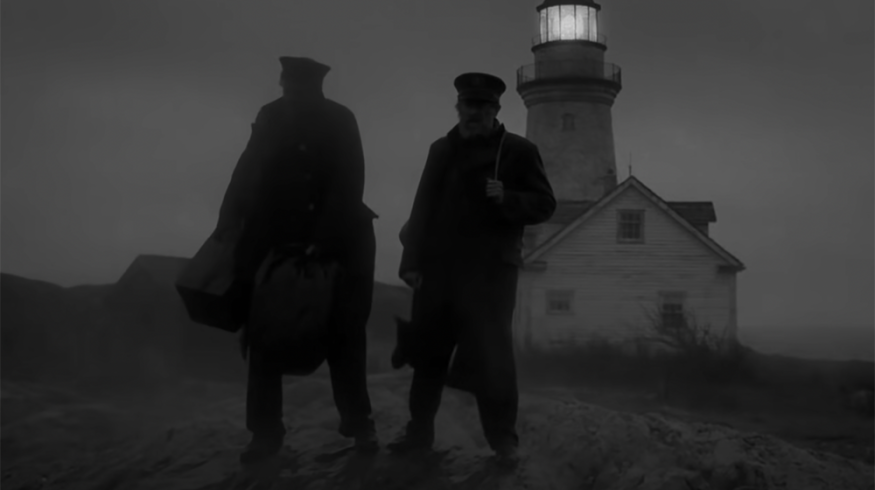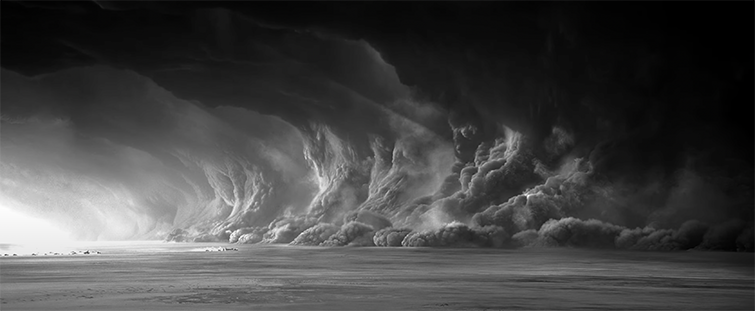
Is Modern Black and White Cinematography Just a Gimmick?
With several major black and white releases on the horizon, let’s take a look at the pros and cons of this nostalgic cinematography.
At this point, black and white cinematography is nothing more than an aesthetic and creative choice. It’s much the same as grading the footage a certain way, or using a particular LUT. It’s not a requirement caused by limitations or necessity—it’s a creative direction.
However, one could argue that it’s the most extreme example of this particular type of color grading aesthetic direction—to altogether remove all saturation from your image to evoke a certain mood or emotion from the audience.
Usually that mood is nostalgia, and black and white is used to illicit a feeling of the past. It’s inherently more cinematic, hearkening back to the origins of filmmaking and the silver screen.
But, does this type of imagery only exist to trick the audience into thinking the film itself is more substantial or artistic than it is?
Perhaps. Let’s discuss!
The Argument for Black and White Films
The fact is that some of the most beautiful examples of cinematography in the past decade are black and white films. Take for example Roma, The Lighthouse, Cold War, Mank, or Ida.
Usually, when a movie is greenlit for black and white, everybody pulls out all of the stops to ensure the visuals match the ambition.
Take Mank, for instance. The theme and story of the film lend themselves to a vintage, black-and-white look. There’s a specific reason for the film to be shot in this way.
Director David Fincher and cinematographer Erik Messerschmidt worked with RED to provide a “monochrome” camera (the RED Helium Monochrome) that can only shoot black and white.
Therefore, even though it’s shot digitally, a color version of the film doesn’t exist anywhere. That’s commitment.
In my opinion, the quality of black and white cinematography can be directly correlated to the director and cinematographer’s love of cinema. Usually, the decision to shoot in black and white stems from a love for older pieces of cinema.
It’s hard to separate the love and nostalgia they feel for those movies from the modern audience’s expectations of what images need to look like. When this genuine inspiration is paired with a healthy collaboration between the director and DP, we get some pretty stunning images.
Given Marvel and Disney currently controling the box office, it’s obvious what “big” audiences want. However, that’s entirely separate from the in-between crowds that show up for movies like The Lighthouse and C’mon C’mon.
There’s hope for black and white movies to continue gracing our screens.
I can’t help but think about Instagram and the lack of black-and-white photography popularity on the app. It’s pretty shocking how poorly black and white images “perform” compared to color images.
Black and white films historically don’t perform as well at the box office, and are therefore hard to market to mainstream audiences regardless of the filmmaker or actors who made the movie.
Re-Cut Black and White Versions

You also have directors making statements like, “This was actually meant to be in black and white.” One of the latest trends is to release a movie in both black and white—and color.
Parasite – The Black and White Cut
Take 2019’s Parasite, for example. Director Bong Joon-Ho has said many times that he thought the film was more impactful with a black and white cut, saying the contrast between light and dark added even more meaning to the film.
It should be noted though that he didn’t shoot it in black and white, and he didn’t have his DP light the scenes for black and white, but rather color.
Given that the film worked wonders in color, winning Best Picture and performing extremely well at the box office, Bong Joon-Ho would eventually be able to release the black and white version.
The million dollar question is—why?
Did it change the overall experience of the film? Did it change how the story was told? I think that’s hard for audience members to say.
The hope is they see another layer to the story, just as Boon Joon-Ho does. At least, that is my hope.
I’ve often found that when I watch the black and white version of a movie I’ve already seen in color, my experience watching the film doesn’t change much. If anything, I get used to the lack of color after a few minutes and stop thinking about it.
Justice League “Snyder Cut” in Black and White
While writing this article, I opened up HBO Max, and one of the first films featured on their homepage is a black and white version of the Justice League Snyder Cut.
I’m going to throw it on right now and see what I think.
Well, that was a long four hours. Just kidding. I didn’t sit through the whole thing because I already watched it in color.
I wanted to see if the black and white version offered anything the color version didn’t. Turns out, not really?
But, this plays into the argument I wanted to make when I originally started writing this article: More than anything, the choice to shoot or convert your film in black and white seems like the director’s fantasy and calling . . . and I support that.
Perhaps certain types of movies are more suited for the back and white film medium. Blockbuster superhero films should probably always remain in color, because their storytelling style doesn’t often require the thematic shift black and white can provide.
I think the argument presented in the title of this article comes down to the idea that black and white imagery is somehow more prestigious or artistic than color. I can’t help but also feel this way about aspect ratio and film format.
Suppose you see a movie that’s presented in 4:3, was shot on film, and is in black and white. In that case, you can almost guarantee the filmmaker has made these decisions with a particular visual palette and experience in mind.
More power to them.
The Future of Black and White
Having just premiered at Venice Film Festival, Andrew Dominik’s Blonde will switch back and forth between black and white/color and shifting aspect ratios. It will be released on Netflix, so we’ll soon know the performance of the film.
We’ll also learn if the option to shoot in black and white was a good risk for the streaming giant in 2022. They’ve shown a willingness to fund black and white films in the past with Roma and Mank (each winning Oscars for their Cinematography.)
So, the future of black and white movies is in the streaming space.
While each year there are black and white releases, I think the single most prominent black and white release to come out in decades will be next year’s Oppenheimer by Christopher Nolan.
Nolan is a bankable name for theaters. Still, the decision to shoot on black and white large format film is a bold, risky move for Nolan and Universal Studios.
This movie will be an exciting test to see just how make-or-break a black and white film will be for modern audiences. It’s also worth noting that Oppenheimer will be the first film shot on IMAX 65mm black and white film.
Here’s what I know. Having been shot by Hoyt van Hoytema, Oppenheimer will rightfully be a visual spectacle worth watching on the big screen.
If the film makes a lot of money, we’ll see many more black and white big-budgeted films in the future. It’s inevitable.
I’m incredibly excited for Oppenheimer in all its monochromatic, big format glory.
In Conclusion
Is black and white cinematography a gimmick? No. I love black and white cinematography.
Whether a film is shot in black and white or converted in post-production, these decisions are a director’s artistic statement and shouldn’t be up to anybody but them to determine the merits.
Some of my favorite modern films are black and white. Some worth mentioning are Cold War, Roma, C’mon C’mon, and Frances Ha.
I’ll always be eager to see the latest black and white film, and hope they stick around for the foreseeable future.
For more filmmaking tips and tricks, check out these articles:
- A Complete Guide to Continuity Editing in Film and Short Videos
- Useful Movie Magic With Forced Perspective
- The Art of Split Screen
- What is CGI? How Reality and CGI Blend in Films
- Creating Specific Color Schemes in 3D for Filmmaking
Cover image via A24.




